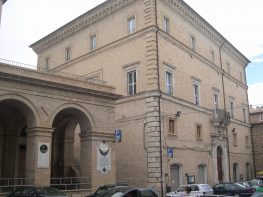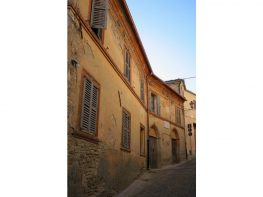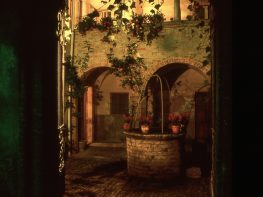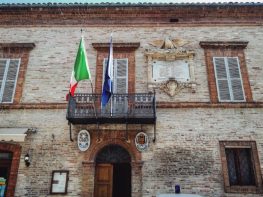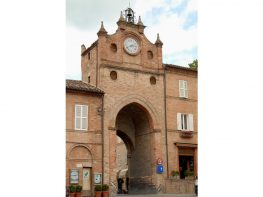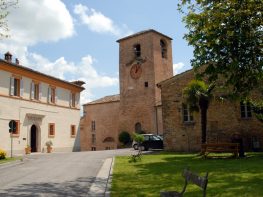Di fronte al Parco cittadino, a poca distanza dalle scuole è la stazione. Questa è una delle quattro (insieme a PS Giorgio, Fermo ed Amandola) ad essere stata situata a ridosso del rispettivo centro abitato. Dall’autunno del 1955 il treno arrestava la sua corsa in questa stazione e i viaggiatori venivano trasportati fino ad Amandola con un servizio sostitutivo di autobus. Pochi mesi dopo, giunta la fine dell’estate, la ferrovia verrà definitivamente chiusa. Durante la guerra in questa stazione transitarono decine di prigionieri alleati per essere reclusi nell’attiguo campo di concentramento; proprio di fronte alla stazione c’è ancora il cancello attraverso il quale transitavano. Al termine della guerra venne mutato in campo profughi. Nel XXI secolo, dopo i tragici avvenimenti della Seconda Guerra Mondiale, l’ex stazione ferroviaria fu restaurata e adibita a Casa dell Memoria con l’obiettivo di perpetrare la memoria del CPG-59 (campo prigionieri di guerra), oggi Parco della Pace, attraverso la raccolta di fotografie storiche e materiale documentario, di testimonianze, l’accoglienza di visitatori e studiosi per educare i giovani e le future generazioni ai valori della pace, della democrazia e della solidarietà. All’interno sono presenti una sala conferenze multimediale e due sale con una mostra permanente.
Opposite the local park, near the schools, is the station. This is one of four stations (together with Porto San Giorgio, Fermo and Amandola) situated close to the town centre. Since autumn 1955, trains stopped here and passengers were taken as far as Amandola by a replacement bus service. A few months later, at the end of the summer, the railway was closed permanently. During the war, dozens of allied prisoners came through this station to be held in the nearby concentration camp; the gate through which they passed is still right in front of the station. At the end of the war it became a refugee camp. In the 21st century, after the tragic events of the Second World War, the old railway station was renovated. It became the House of Remembrance, with the aim of keeping the memory of CPG-59 (the prisoner-of-war camp) alive, through collections of historical photographs, documentary material and testimonials. Visitors and scholars are welcomed; in particular, young people and future generations are taught the values of peace, democracy and solidarity. Inside, there is a multimedia conference room and two rooms holding a permanent exhibition.






